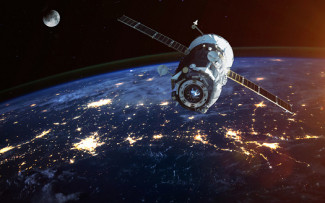
Johns Hopkins UniversityEst. 1876
America’s First Research University
Misconceptions in Nuclear History: ICBMs

The creation of the intercontinental ballistic missile, or ICBM, in the 1950s is an important event in both the history of nuclear weapons and in that of space exploration. Until recent years, however, the real stories behind the first ICBMs were concealed or misunderstood.
The Soviet Union’s first ICBM, the R-7, shot into the headlines in October 1957, when it was used to launch the first artificial satellite of the Earth, Sputnik. The surprise and consternation Sputnik caused around the world, and especially in the United States, led to major misunderstandings over the history of ICBMs that persist to the present day.
The R-7 was developed in secret, and once it began to fly, its story was distorted as part of larger Soviet propaganda narratives. The openness that followed the fall of the Soviet Union in the 1990s allowed the real history of the R-7 to be told.
The creation of America’s first ICBM, the Atlas, has also been shrouded in myth. My new book, The Bomb and America’s Missile Age, deals with those myths as it explains how marrying long range ballistic missiles to nuclear weapons went from an idea at the end of World War II to a high priority national program in the spring of 1954.
Both Atlas and the R-7 were liquid fueled rockets that were better suited to be space launch vehicles than ICBMs. Atlas first went on station as an ICBM in 1959 and was used for that purpose until 1965, when it was replaced by the more suitable Titan and Minuteman ICBMs. The R-7 served as an ICBM over roughly the same time span.
Because the R-7 was built much larger than it needed to be for military purposes, it was able to launch large payloads into space, including Sputnik, many other satellites, the first Soviet probes of the moon and neighboring planets, and virtually all of Russia’s human spacecraft up to the present time.
The U.S. government chose to use smaller rockets than Atlas to launch its very first satellites, which is one reason why the history of Atlas has not been adequately studied until recently. But Atlas served as one of the primary workhorses of the U.S. space program from 1958 until the end of the 20th century, launching America’s first astronauts into orbit, along with many important satellites and space probes.

Many works covering the roots of America’s missile and space programs were based on assumptions made in the wake of Sputnik, and they missed the realities of the decade that followed World War II, when America’s military was struggling with many technological, organizational, and financial challenges that have since been largely forgotten.
Although ICBMs were built by military forces and were designed for military purposes, the military factors that dictated the development of Atlas were often ignored in earlier accounts of its history. In writing The Bomb and America’s Missile Age, I researched how the U.S. Air Force and other services really saw missile programs in the postwar era.
While it is well known that the German rocket known as the V-2 advanced missile technology in World War II, its many deficiencies limited military interest in larger ballistic missiles after the war. Further technical advances for missiles and new military needs created by the hydrogen bomb in the 1950s converted skeptical scientists, engineers, and military officials into advocates for ICBMs.
Without ICBMs, humanity’s initial ventures into space might have been much slower and more modest than they were. I believe that The Bomb and America’s Missile Age provides a fresh and more accurate account of this episode in the history of nuclear arms and the events that immediately preceded humanity’s first steps into space.
Christopher Gainor is the author of The Bomb and America's Missile Age.


